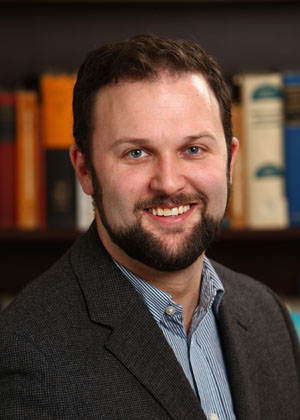Mount Saint Vincent University Psychology professor and researcher Dr. Derek Fisher exudes pride and enthusiasm as he talks about the great strides his students and colleagues at the Mount are making in science.
“I do EEG research. Meaning I put a cap on people’s heads and see what their brain does under different conditions,” Derek smiles. “That is the core of what I do.” EEG stands for electroencephalogram, and it is a methodology-driven approach to studying the electrical activity of the brain.
International recognition
 At a conference in Munich, Germany in September 2015, Derek was bestowed a Young Investigator Award by the EEG & Clinical Neuroscience Society. The award recognizes those who have “demonstrated significant contributions to translational research in the field of Neuro-Psychiatric Electrophysiology and Neuroimaging.”
At a conference in Munich, Germany in September 2015, Derek was bestowed a Young Investigator Award by the EEG & Clinical Neuroscience Society. The award recognizes those who have “demonstrated significant contributions to translational research in the field of Neuro-Psychiatric Electrophysiology and Neuroimaging.”
“It was mostly in recognition of my work on auditory hallucinations,” Derek says modestly.
Derek has published extensively in the pursuit of understanding how auditory hallucinations affect brain activity, and since coming to the Mount four years ago, he has inspired the same passion in his students and encouraged their own research— students like Erica Rudolph and Emma Ells.
“Two things have come from this award,” Derek says. “People are starting to recognize that incredible science is happening at the Mount, and—as a big supporter of Dr. Tamara Franz-Odendaal’s work promoting women in science— it is important for me that people see the work that students like Erica and Emma have done and see two incredibly bright young women doing cognitive neuroscience. The more role models that are out there showing that this isn’t a gender-specific discipline, the better.”
Research into early identification of schizophrenia
As Psychology Honours students, Erica and Emma made incredible contributions to Derek’s work. This research was conducted in collaboration with Dr. Dean Salisbury from the University of Pittsburgh, and the Nova Scotia Early Psychosis Program and focuses specifically on schizophrenia and psychosis, and something known as the “mismatch negativity” brainwave. The first of these studies was recently published in the journal Schizophrenia Research with Erica as the lead author.
“Mismatch negativity is fantastically interesting in this group, because if you look at chronic schizophrenia patients, they really show a robust deficit in this brainwave, and the consistency of it is remarkable, as you don’t tend to see it in other disorders,” Derek explains.
After running three different paradigms, the research team found that when traditional, simple paradigms are used to study the mismatch negativity brainwave, there are no signs of deficit; however, when using a more complex paradigm designed by Dr. Salisbury, there is a really large reduction indicated. Excitement over the research Derek and his students have been involved in stems from a hope that the mismatch negativity brainwave may be used as an observable marker— an endophenotype, as it is formally called— for schizophrenia.
“An endophenotype should be able to be used to predict who is going to develop the disease and who isn’t. While further research is needed, there is early indication that using this newly developed paradigm, the mismatch negativity brainwave may be an effective marker for schizophrenia.”
“The next step for us is, through the Nova Scotia Early Psychosis Program again, and their arm through the IWK, is to look at adolescents who either have a genetic high-risk of developing schizophrenia, or who are at clinical high-risk,” Derek adds. “If we determine that this more complex way of assessment can accurately predict who is going to develop schizophrenia and who isn’t, that means we can intervene earlier, and for people with schizophrenia, the sooner you intervene the better the prognosis.”
More on Research at the Mount